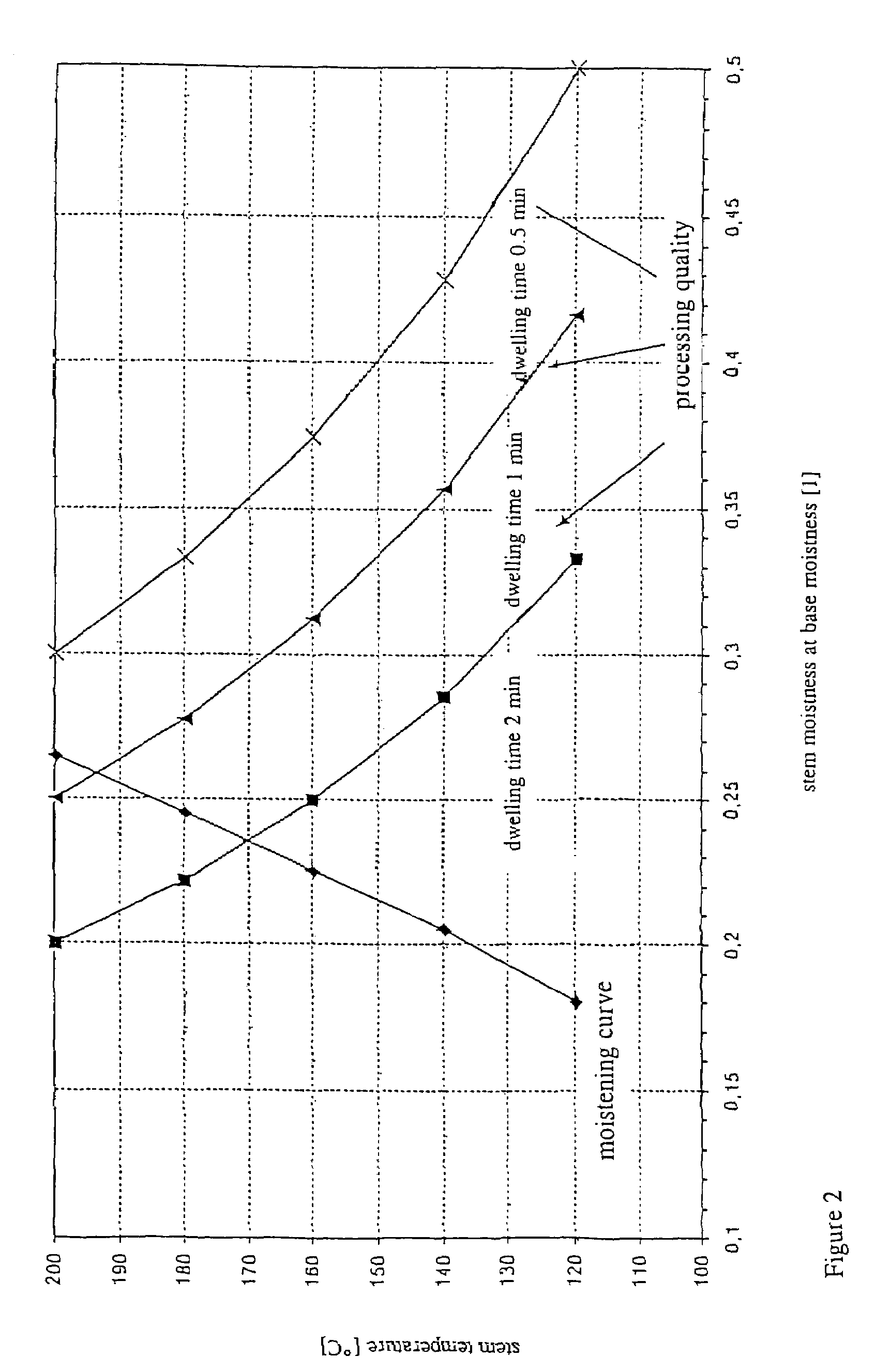Pressure-conditioning device
a technology of pressure conditioning device and dryer, which is applied in the field of continuous method of conditioning material, can solve the problems of large time and space requirement of box, easy torn out slippery stems of stem cakes, and large space requirements of boxes, so as to avoid additional processing steps, reduce the thermal output of dryer, and save energy and equipment costs
- Summary
- Abstract
- Description
- Claims
- Application Information
AI Technical Summary
Benefits of technology
Problems solved by technology
Method used
Image
Examples
Embodiment Construction
[0059]In accordance with the representation in FIG. 1, the tobacco stem conditioning device in accordance with the invention comprises a pressure proof screw conveyor 2, into which the tobacco stem material 12 is introduced via a feed shoe 14 of a pressure differential proof cellular wheel sluice 4. The screw conveyor 2 comprises the conveying screw 3, likewise shown schematically only, wherein in actual practice the outer edge of the conveying screw 3 extends almost up to the inner wall of the casing of the screw conveyor 2. In the screw conveyor 2, steam and—depending on the desired end moistness of the tobacco material—also warm water are sprayed in via various nozzles 1 distributed over the circumference and length of the casing of the screw conveyor 2.
[0060]In specifically suitable cases, a casing medium can also be supplied via the nozzles 1. In the interior of the screw conveyor 2, a particular process pressure and a particular process temperature are set, depending on the st...
PUM
 Login to View More
Login to View More Abstract
Description
Claims
Application Information
 Login to View More
Login to View More - R&D
- Intellectual Property
- Life Sciences
- Materials
- Tech Scout
- Unparalleled Data Quality
- Higher Quality Content
- 60% Fewer Hallucinations
Browse by: Latest US Patents, China's latest patents, Technical Efficacy Thesaurus, Application Domain, Technology Topic, Popular Technical Reports.
© 2025 PatSnap. All rights reserved.Legal|Privacy policy|Modern Slavery Act Transparency Statement|Sitemap|About US| Contact US: help@patsnap.com



